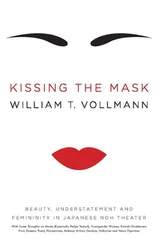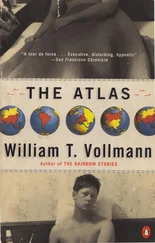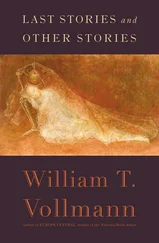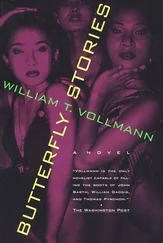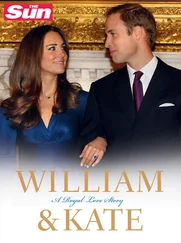William Vollmann - The Royal Family
Здесь есть возможность читать онлайн «William Vollmann - The Royal Family» весь текст электронной книги совершенно бесплатно (целиком полную версию без сокращений). В некоторых случаях можно слушать аудио, скачать через торрент в формате fb2 и присутствует краткое содержание. Год выпуска: 2000, ISBN: 2000, Издательство: Penguin, Жанр: Современная проза, на английском языке. Описание произведения, (предисловие) а так же отзывы посетителей доступны на портале библиотеки ЛибКат.
- Название:The Royal Family
- Автор:
- Издательство:Penguin
- Жанр:
- Год:2000
- ISBN:9780141002002
- Рейтинг книги:5 / 5. Голосов: 1
-
Избранное:Добавить в избранное
- Отзывы:
-
Ваша оценка:
- 100
- 1
- 2
- 3
- 4
- 5
The Royal Family: краткое содержание, описание и аннотация
Предлагаем к чтению аннотацию, описание, краткое содержание или предисловие (зависит от того, что написал сам автор книги «The Royal Family»). Если вы не нашли необходимую информацию о книге — напишите в комментариях, мы постараемся отыскать её.
The Royal Family — читать онлайн бесплатно полную книгу (весь текст) целиком
Ниже представлен текст книги, разбитый по страницам. Система сохранения места последней прочитанной страницы, позволяет с удобством читать онлайн бесплатно книгу «The Royal Family», без необходимости каждый раз заново искать на чём Вы остановились. Поставьте закладку, и сможете в любой момент перейти на страницу, на которой закончили чтение.
Интервал:
Закладка:
By Thirty-Sixth Avenue the houses have begun to crowd and to swell, like muscular apprentice construction workers old enough to bleed in wars but too young to vote, old enough to lift the heaviest buckets of paint and bags of sheet rock but too young to sit guarding the coffeepot; and so they hustle, trying to get what they can as time advances down Geary Street’s blue-grey ribbon, and the number 38 Geary bus, the most frequent in the city, I believe, except perhaps the 30 Stockton, roars beeping in and out of fog. A few homes, the so-called multiplexes constructed in the 1950s and 1960s, still resemble squarish concretions of mist, but as they move farther from the greenish hazy sea they begin to dry off and get down to brass tacks. Each one wants to be voted Most Likely To Succeed. Each one wants to receive a loyalty certificate. Each one wants to get rich. What to do, then, but work? And at Twenty-Sixth Avenue, demarcated by the teardrop domes, more yellow than gold, of the Orthodox church, whose saints gaze out across the thoroughfare, blessing transport, commerce and journeying, the business world properly begins, and Geary Street comes into full strength. In this Russian zone, the restaurants and video parlors like as not proclaim themselves in Cyrillic — more so now at the end of the twentieth century than in the days of the USSR, when Little Russia was mainly comprised of ageing aristocrats and counterrevolutionaries. Now post-Soviets can come and sell pizzas, which is why the character of this thoroughfare is precisely characterlessness. Long before we’ve reached the Moscow and Tbilsi Bakery, banks and Irish pubs have rushed in, and one never knows whether to expect the Wirth Brothers pastry shop or an income tax service, because Geary Street, nomadically epitomized by Geary Shoe Repair, owns such a plainly utiliarian personality — Jack-of-all-Trades Street, we ought to call it. We can bully ourselves into pretending that Geary is something special, but it eschews preciousness; if only lava were to seal it off for five centuries, anthropologists would love it. Shunning Haight Street’s narcissism, Clement Street’s dreaminess, Geary Street expresses pure functionality, like a well-made Indian arrowhead. And Little Russia? As long gone as the ocean! At Sixteenth Avenue, that outpost of expensive grandeur, the Russian Renaissance Restaurant, where I used to transform money into lemon-flavored vodka in the cause of unrequited love, fails to hold the line laid down by the Orthodox saints: it’s all motleyness now, pied and commercially nondescript in the convenient manner of freeways, although at Fifteenth the two wide ribbons of opposing traffic get purified by the fragrance of fresh bagels, and somewhere around there I remember Shenson’s Kosher style deli, whose proudly pregnant Russian-looking countergirl makes Reuben sandwiches, stuffed cabbages, and other treats. May she and her baby remain always overlooked by death.
After Little Russia comes Little Korea with its Hangul newspapers, its excitable, clannish grocerywomen, and above all its temples of grilled meat where for a price one can offer up to heaven the greasy incense of barbeque-smoke, faithfully attended by many small round dishes of pickles. Do I write too much about food? Geary Street knows that everybody needs to eat, just as everybody sooner or later needs an undertaker’s services, and, as I recall, there’s a funeral parlor right here. Geary Street, practical and grey, solves all your necessities! And what’s Geary Street’s necessity? Why, to strain continually eastward, toward the greenery of Union Square and the jewelry shops beyond, none of which it can yet imagine. Ask an entrepeneur what his maximum profit will be, and he can’t tell you, because he’s refrained from limiting himself; on his own forehead he’s inscribed the mark of infinity. Geary Street knows only that there’s no returning to the ocean. So it must vibrate straight ahead, toward the steadily increasing murmur and din of downtown, which is at least partially of its own making. And Little Korea, was it ever anything but the brainchild of Geary Street’s brother-in-law, who worked for the Chamber of Commerce? Don’t ask me. Which of its Korean restaurants is the best? Don’t ask Geary Street. Geary Street has other worries. And now Little Korea lies behind us.
In the Richmond district on a spring Sunday afternoon after many rainy nights, the pale houses shine, with every shadow seemingly painted on. A garage door slowly, magically rolls upward. Sunlight extends its tongue inside. Nothing moves. A sparrow chirps. Clouds hang upended in the sky; the nearly tamed forests of Golden Gate Park peer over the stores and apartments of Geary Street; the morning brightens. A young Asian couple slowly walk down the sidewalk, reading newspapers as they go. But Geary Street hurries past them; Geary Street does not have time for spring.
Perhaps you’ll get the idea from all this that Geary Street is the soul of nothing but practicality. While that would almost be true, I ought to mention Eighth Avenue, where the middle-aged street vaguely remembers its ocean infancy, the mnemonic being the Star of the Sea Catholic church (I forgot to mention the kindred Lighthouse Lighting and Lamp Repairs a few blocks back), but that’s mere dutifulness, like a grown man’s grimacing smile when his maiden aunt tells him how cute he was in diapers; for by Seventh Avenue, Geary Street has reverted to type, insisting that water was not meant to lie foolishly in oceans, but to be used, which is why from beneath the used car lot’s gleaming numbered windshields and shiny hoods there trickles a braided river of soap-blotched water like a molten leopard, thereby underlining another of Geary Street’s important principles: Business ought to be clean.
Davis Realty, the Dragon Restaurant, the car wash and the gas station — thus the heterogenously mundane sweeps on, and by Fourth Avenue many proprietorships have become outlets, chains, warehouses, copy services, banks, dental offices, storage lockers. Swelling and bustling, Geary Street propells itself into the next level of mercantile prosperity, getting but not spending.* At Stanyan Street, which itself imust be considered another of the most important of the unimportant streets, not only as a traffic artery, but also as a demarcation between “the streets” and “the avenues”—here too end the Richmond and Sunset Districts, with Golden Gate Park concluding between them — Geary Street widens, rushing into even more incontrovertible ordinariness , which it proclaims more aptly than ever by means of Commercial Street.
As a prize for this redoubled speed and salesmanship, Geary Street gets its first tunnel at Emerson, where it brightly and shallowly dives, so that no bad sorts can lurk there. Geary prefers the higher class of operators who pay taxes and whose wares are returnable, subject to fine print boilerplate on various warranties; and so it quickly expels us from that tunnel of shining yellow tiles, conveying us to Lyon Street, where we gain our first dissectionist’s view of the white spinal columns of the financial district, that paradisiacal goal of the street, heaven of boutiques, department stores and jewelers. Of course, all that’s still as far away as the imaginary countries painted on the backdrops of the Opera House, but Geary Street has heard rumors from a passing 38 Geary bus that someday, after many city blocks, generations and improvisations, it will find at the summit of its old age a gem laid down for the taking — namely, Union Square, immense emerald set in the stonework and brickwork and pavement of San Francisco — and emeralds, like all precious things, possess the ability to render us first shyly self-conscious, then, as the infection of overpowering greenness strikes us, rolling down on our heads like cabbage balls from a Chinatown produce truck, burying us beneath its stacks of green bean bundles, we numbly doubt our own existences, seeking ourselves amist the shining labyrinths of green eternities. Why on earth instead of real emeralds do I go on describing Chinatown’s produce shops, harbors for nomadic Chevvy trucks full of wooden crates of celery? Why mention an earringed Chinese girl, her arms full of broccoli, coming down the gangplank? Because Geary Street, longing though it certainly does for emerald fulfillment — why, even the baser joys of jade would do! — cannot really believe that it is entitled to anything that fine. In green pears and apples, in the fresh chlorophyll of plants, in greengrocers’ stocks it can believe, for the vocations of its shopkeepers who toil patiently on its westernmost reaches provide them. Every day, Geary Street turns vegetables into dollars and sense. It can rely on their greenness. But soon it must shake off its provincial rudeness, for it will intersect Van Ness Avenue not too many blocks hence, and beyond Van Ness lies downtown itself. Yes, Union Square will crown Geary Street’s career, but can it wear such a tremendous emerald without blushing? It wants to; then it will have finally arrived. But can so broad and bluff and workaday a street pull it off? And so Geary Street retreats into dull meditations on broccoli.
Читать дальшеИнтервал:
Закладка:
Похожие книги на «The Royal Family»
Представляем Вашему вниманию похожие книги на «The Royal Family» списком для выбора. Мы отобрали схожую по названию и смыслу литературу в надежде предоставить читателям больше вариантов отыскать новые, интересные, ещё непрочитанные произведения.
Обсуждение, отзывы о книге «The Royal Family» и просто собственные мнения читателей. Оставьте ваши комментарии, напишите, что Вы думаете о произведении, его смысле или главных героях. Укажите что конкретно понравилось, а что нет, и почему Вы так считаете.

